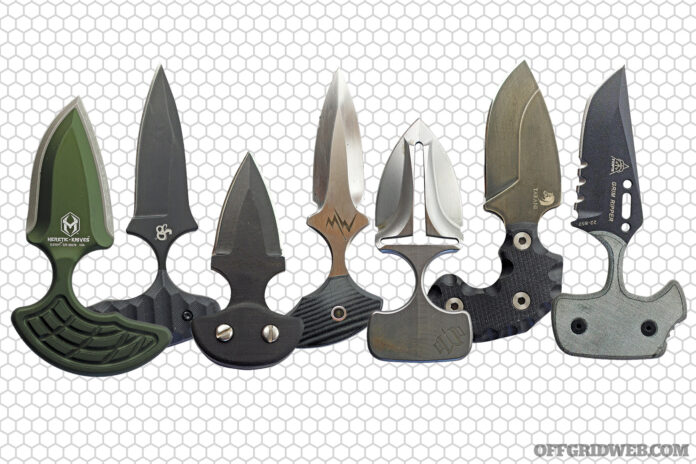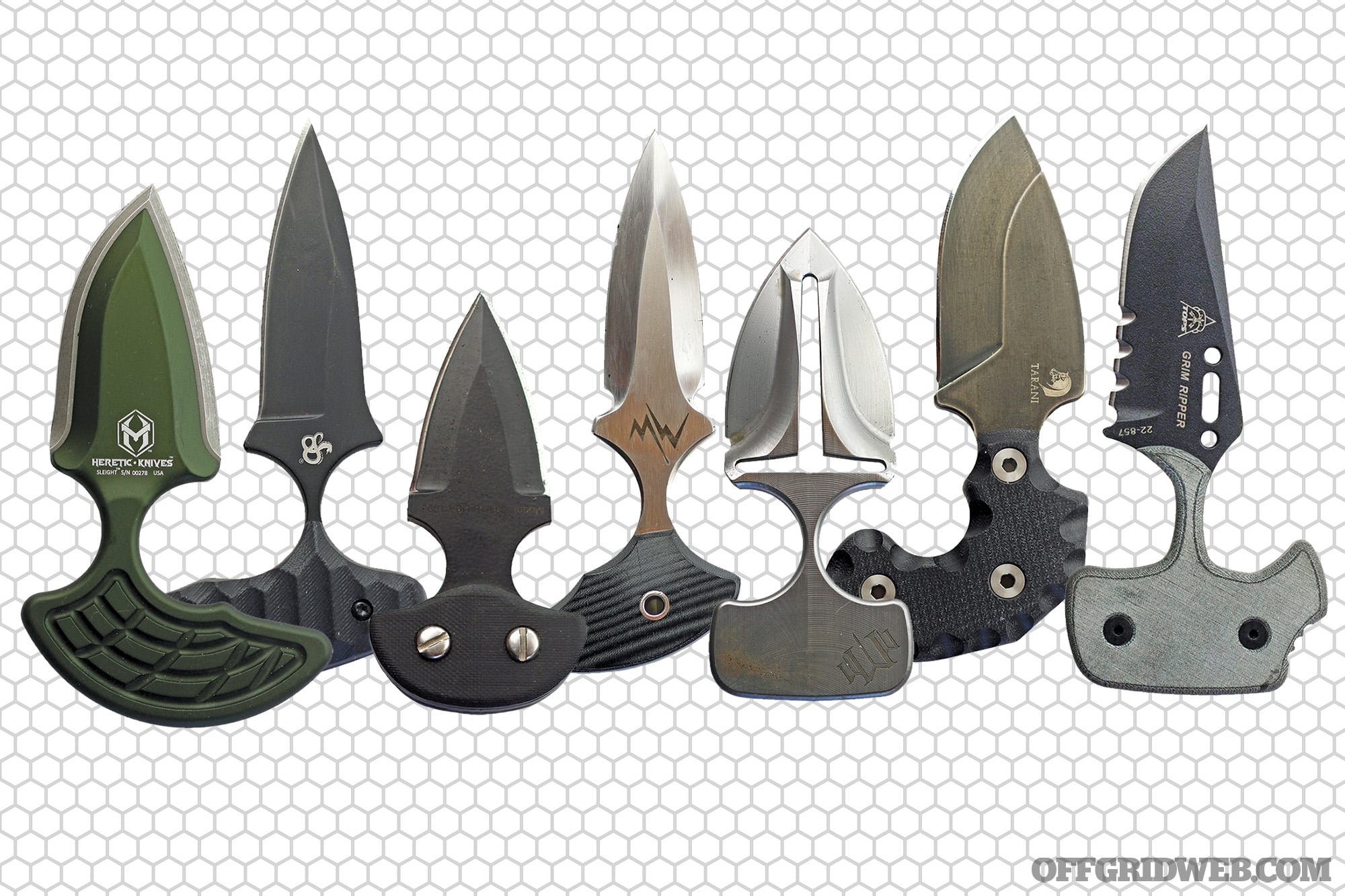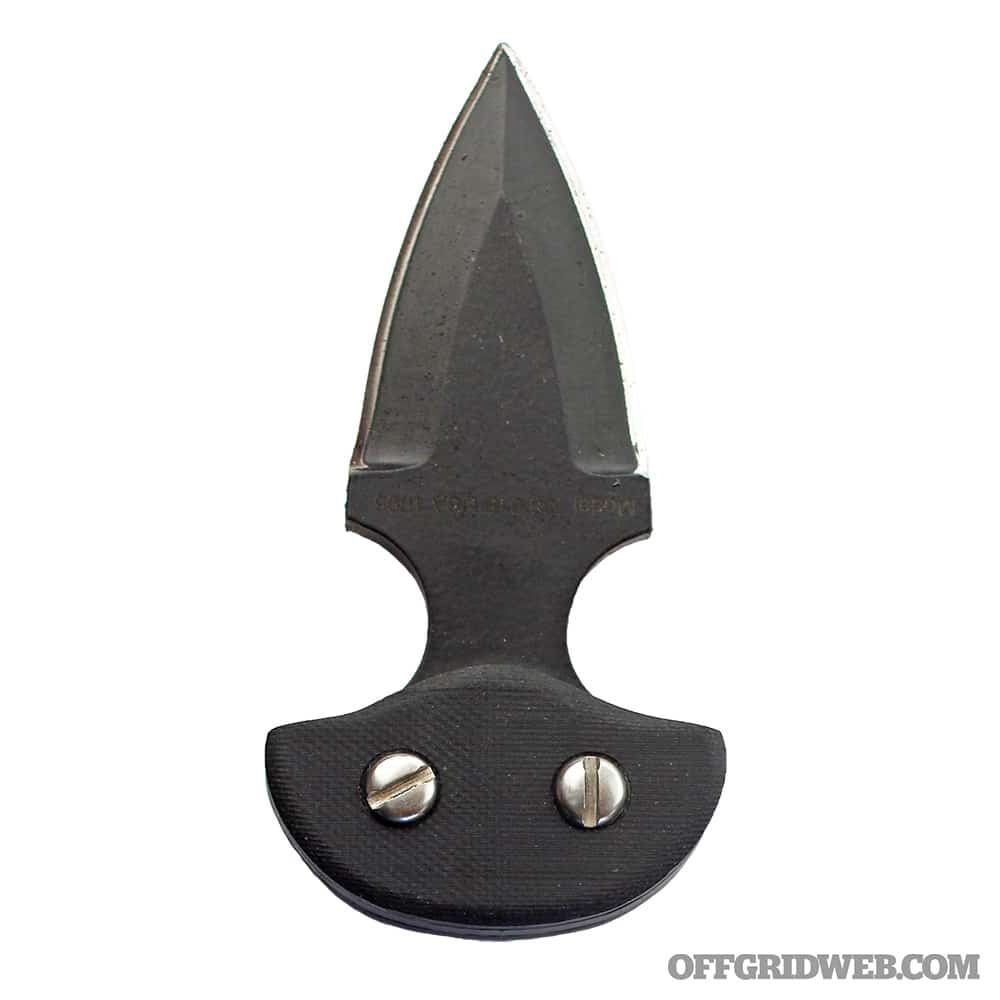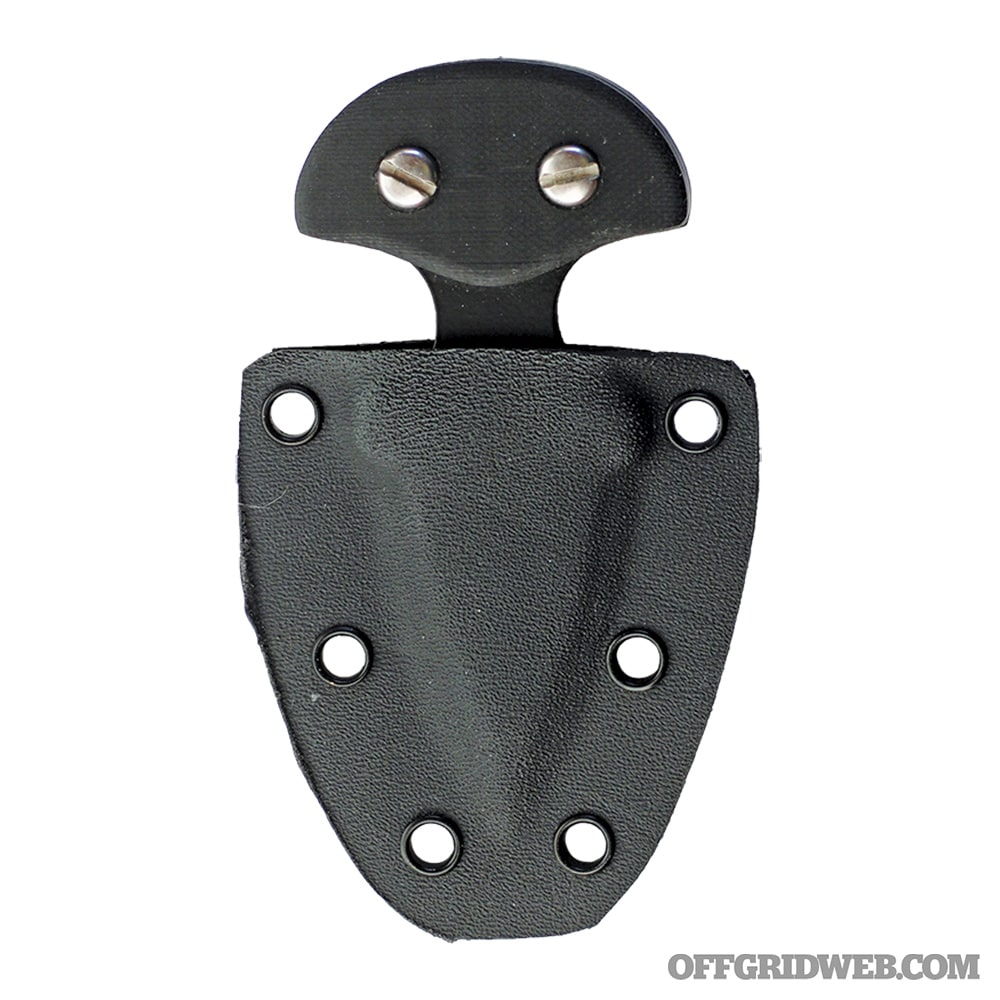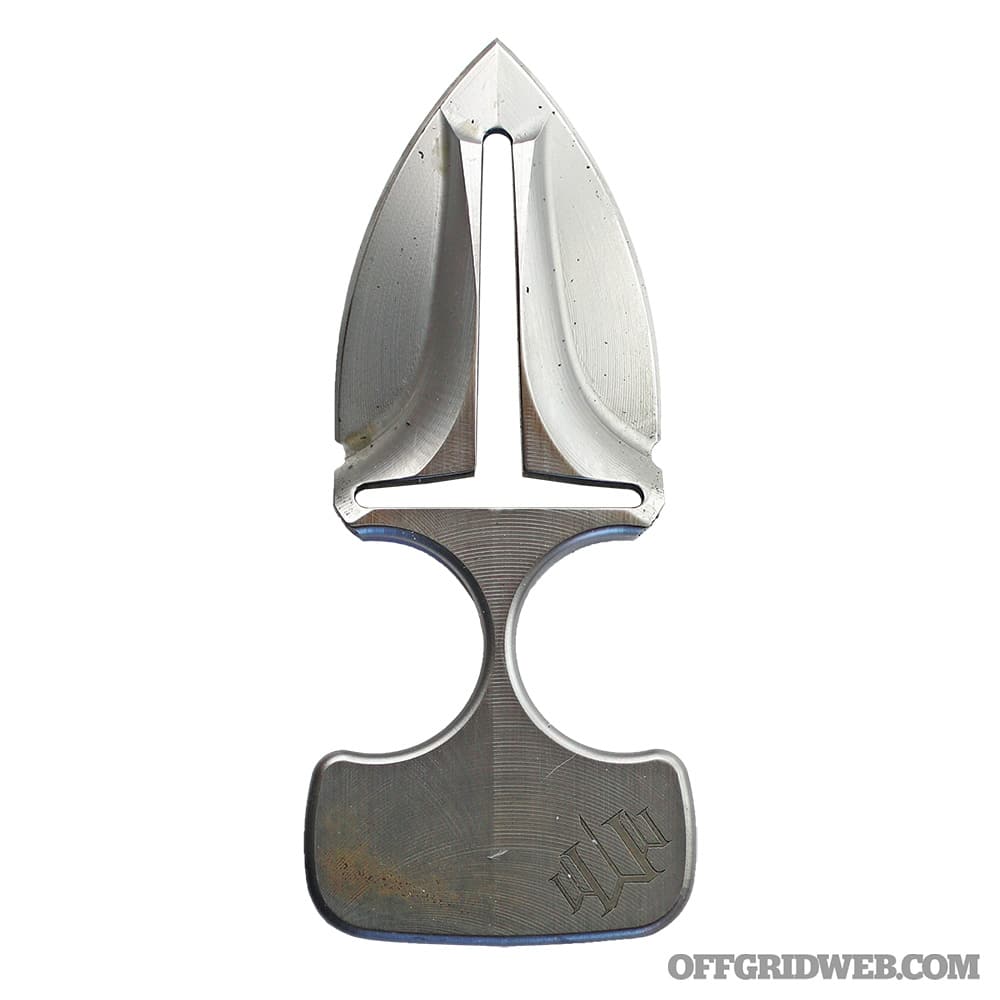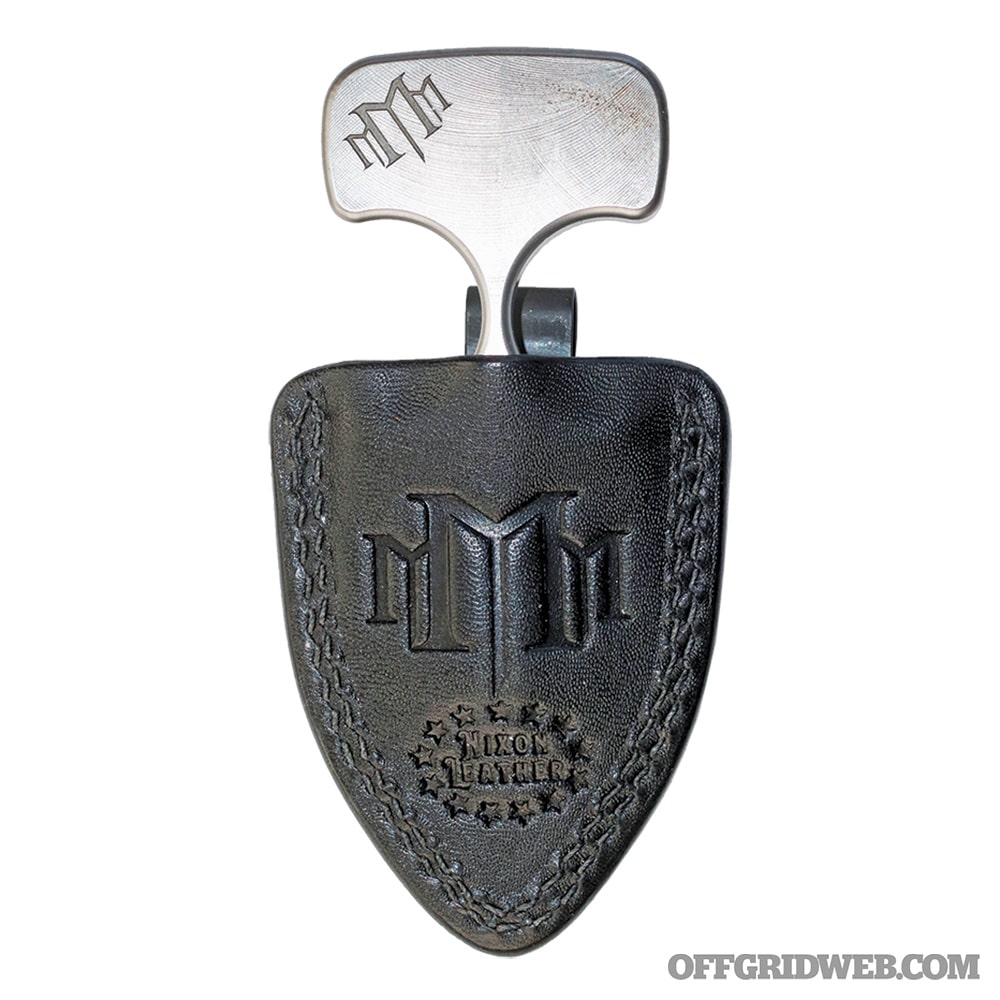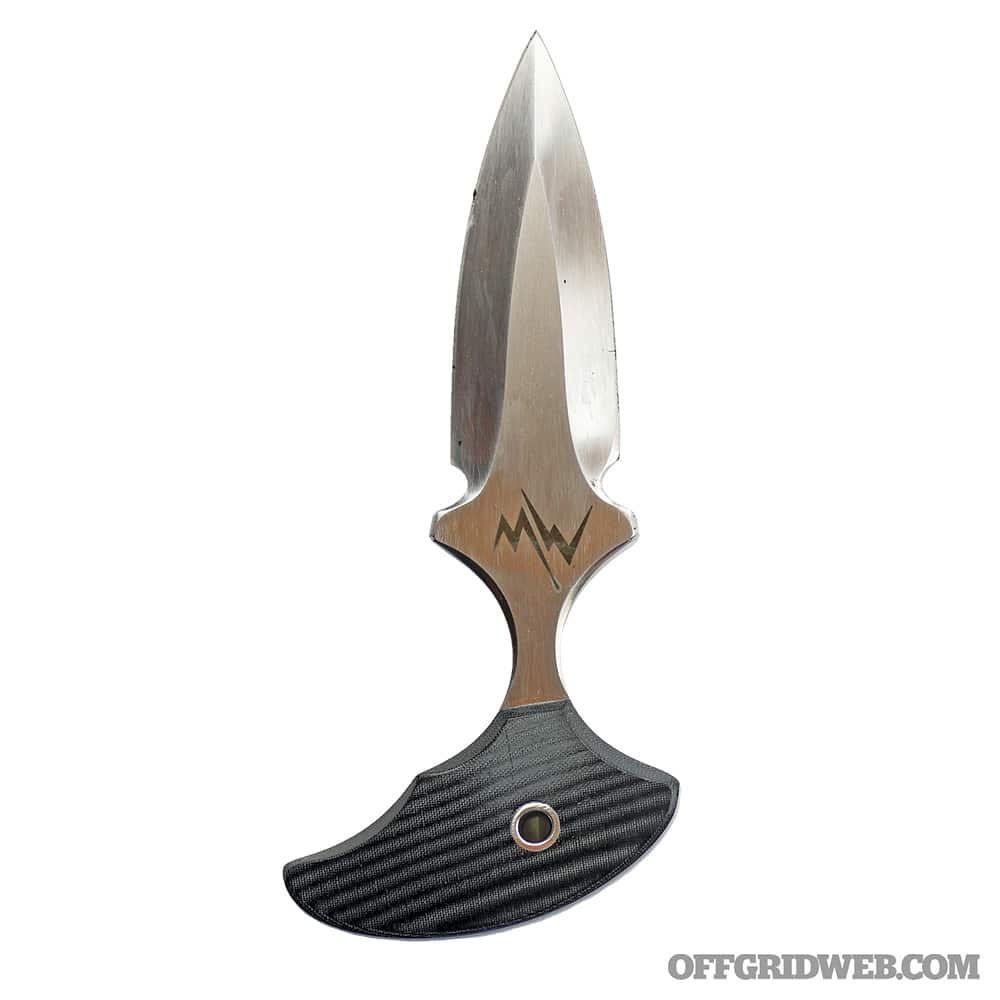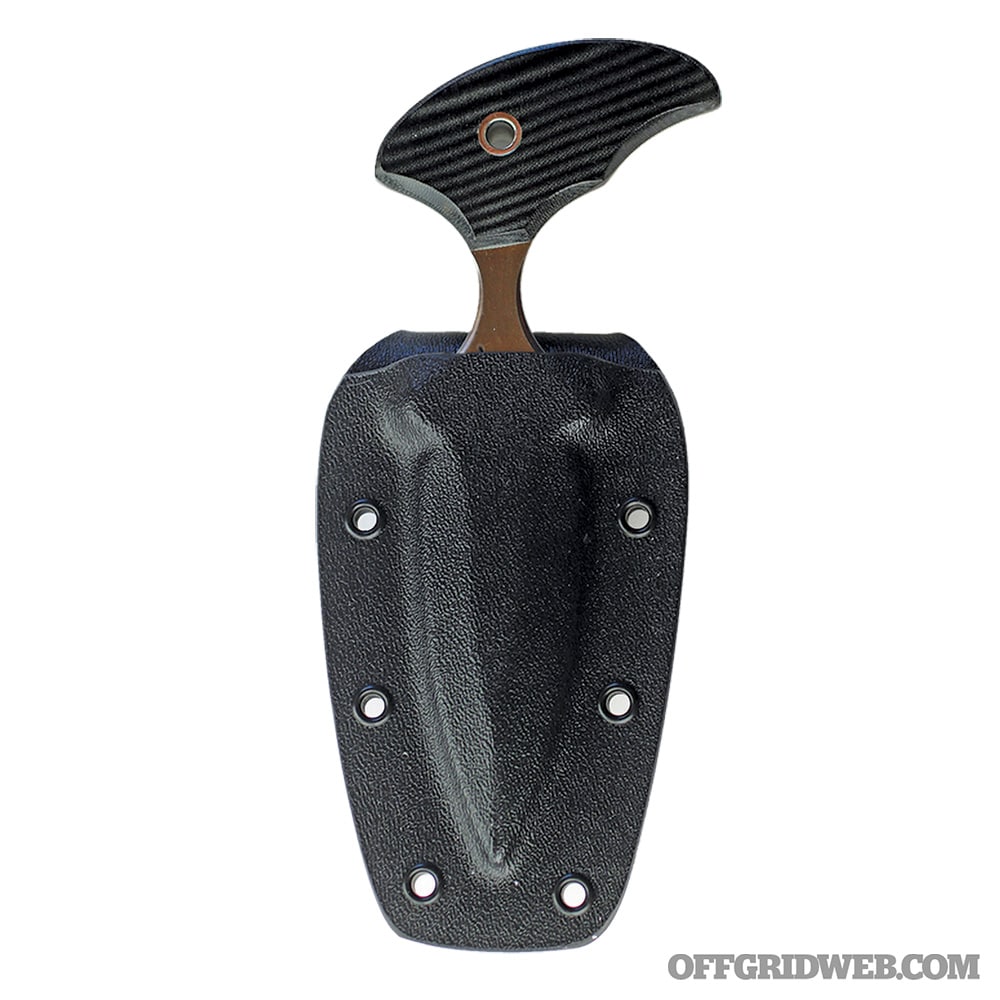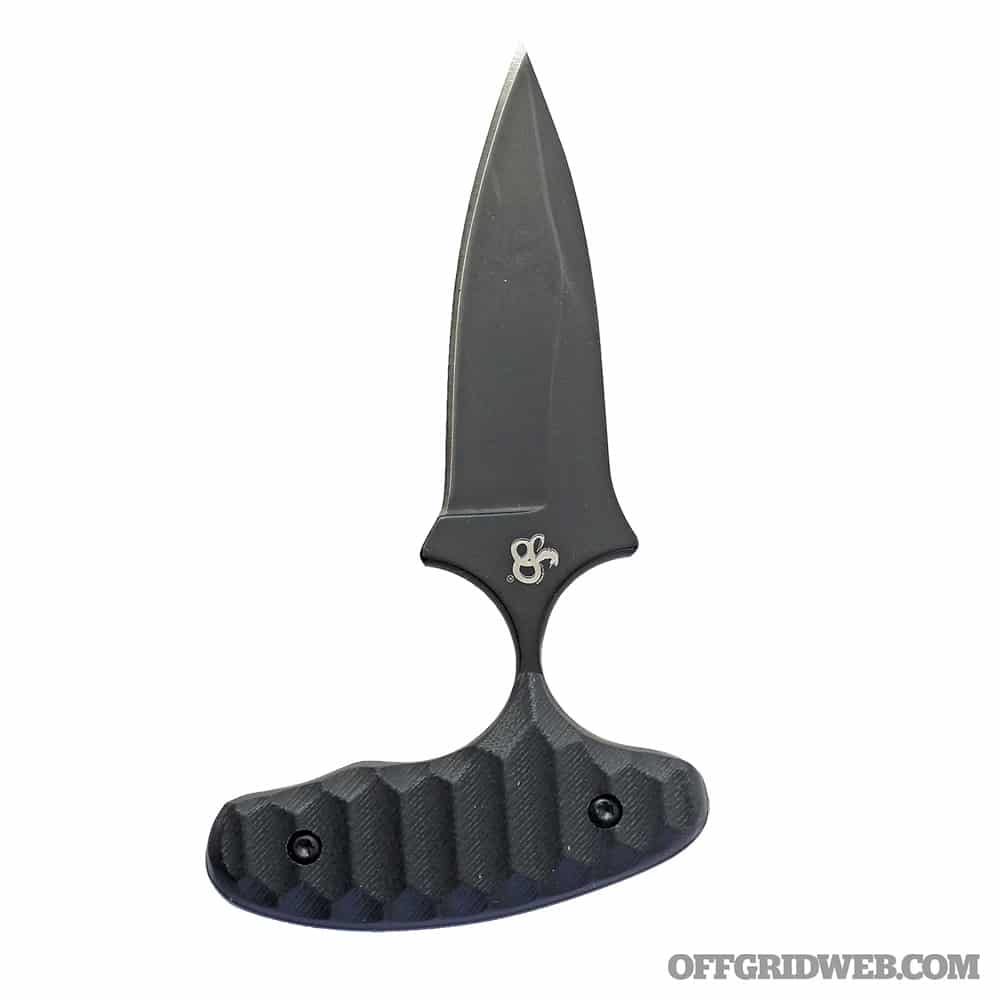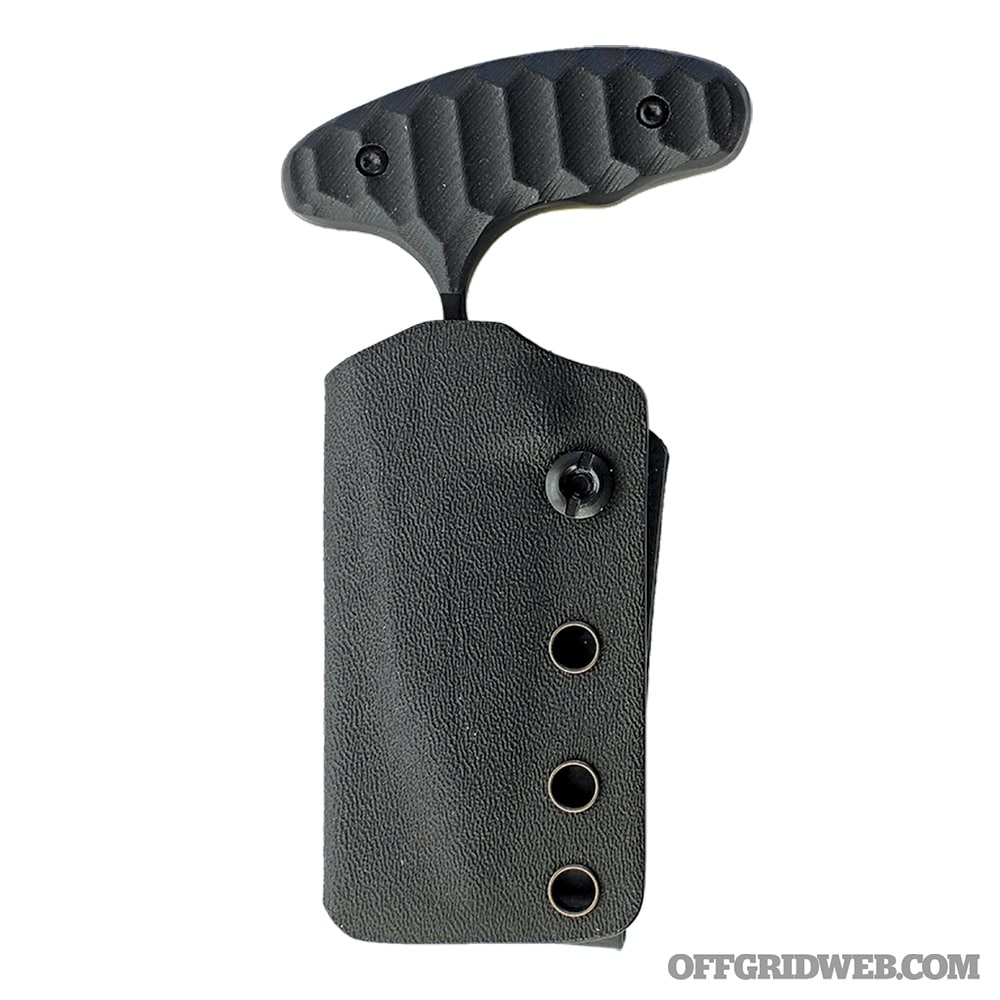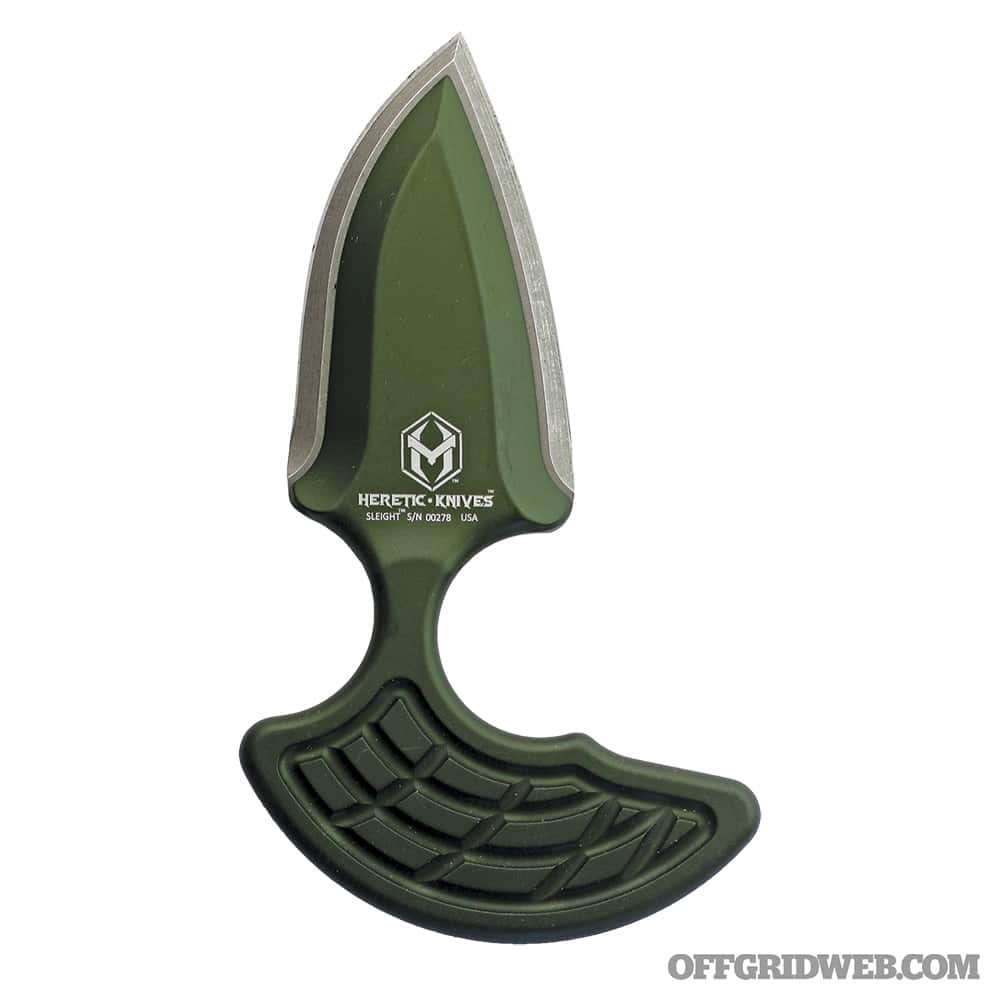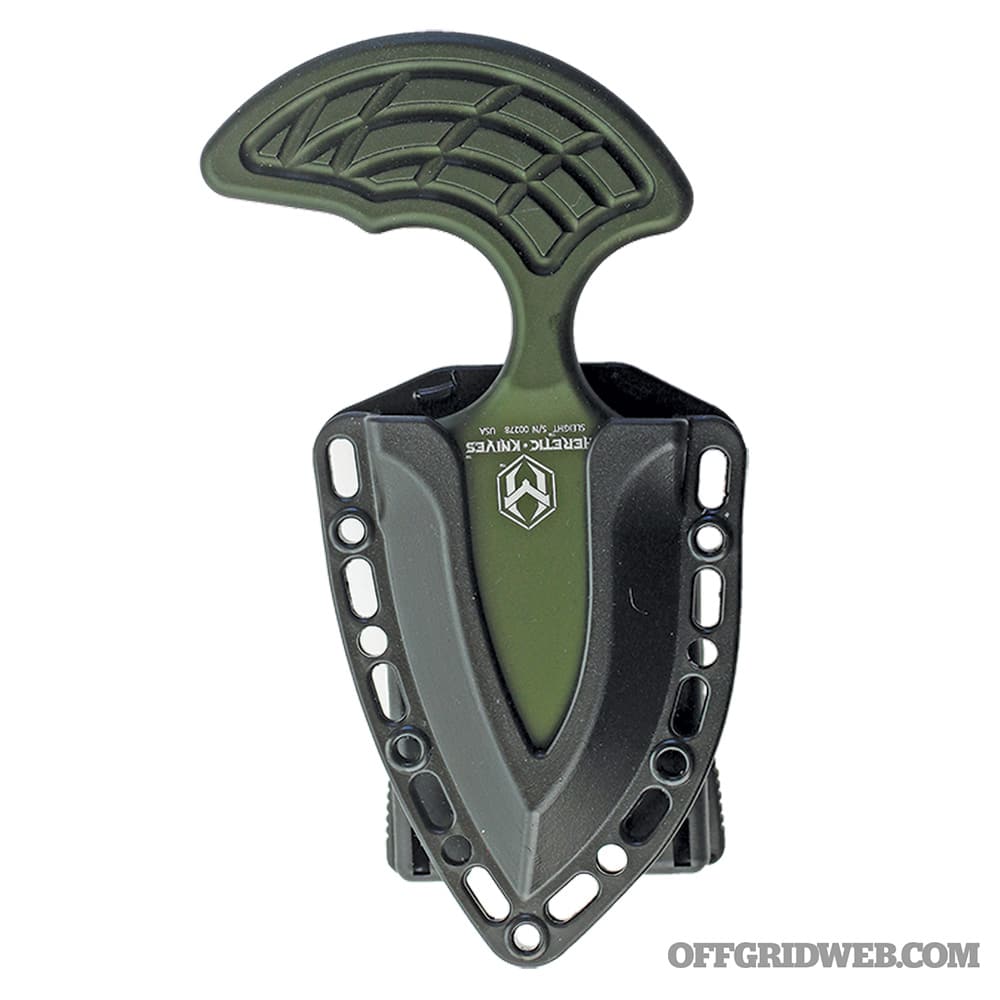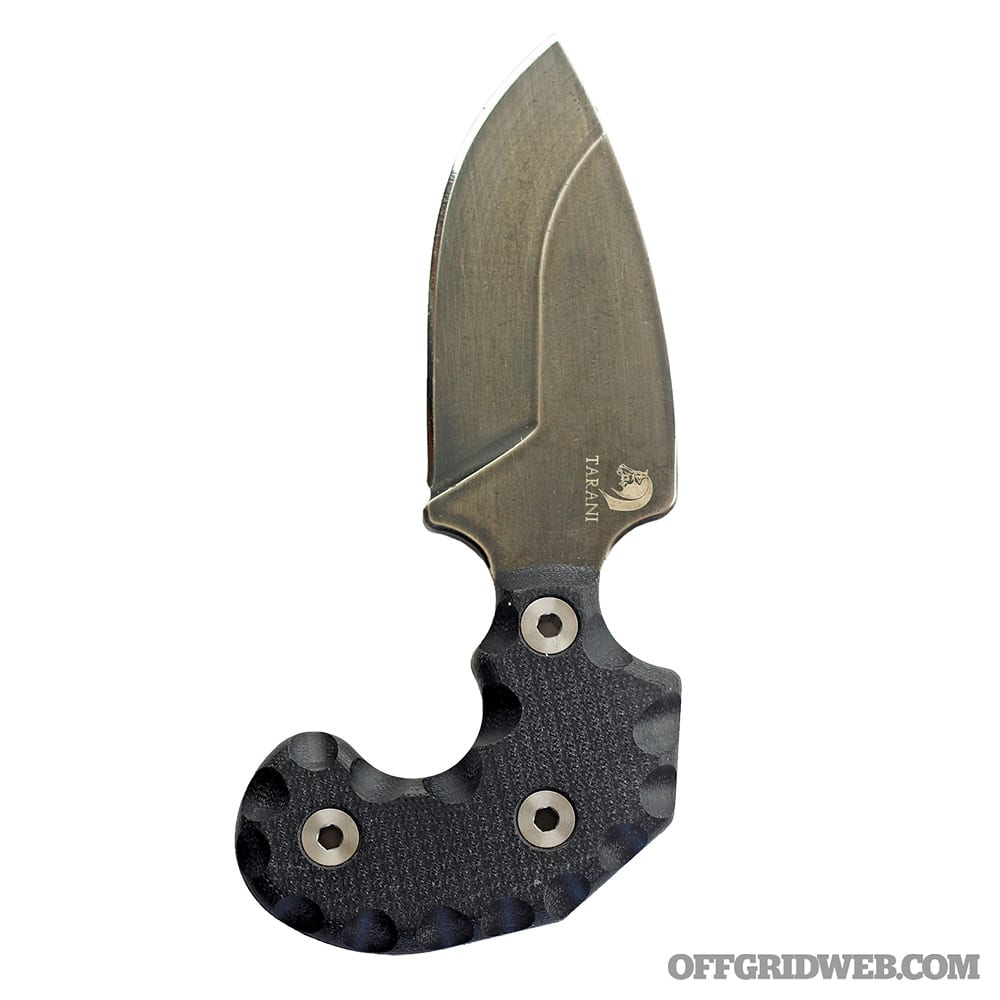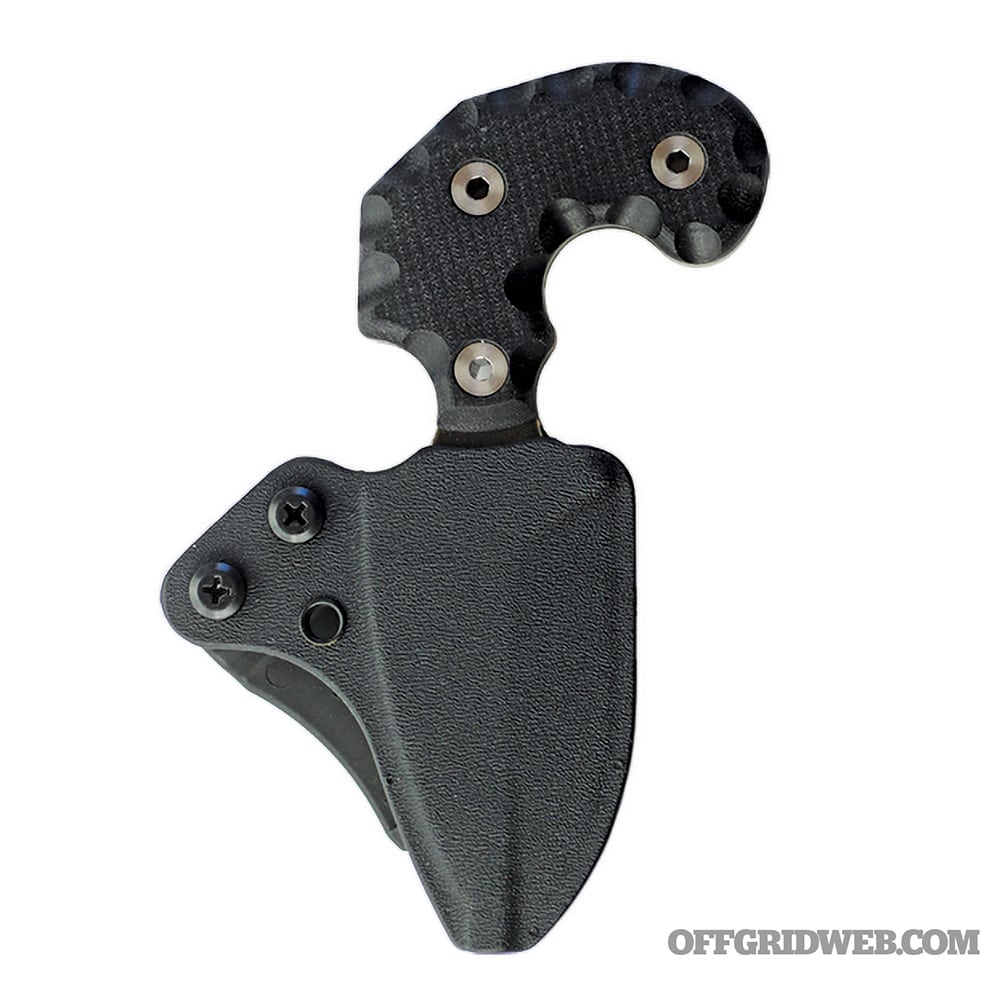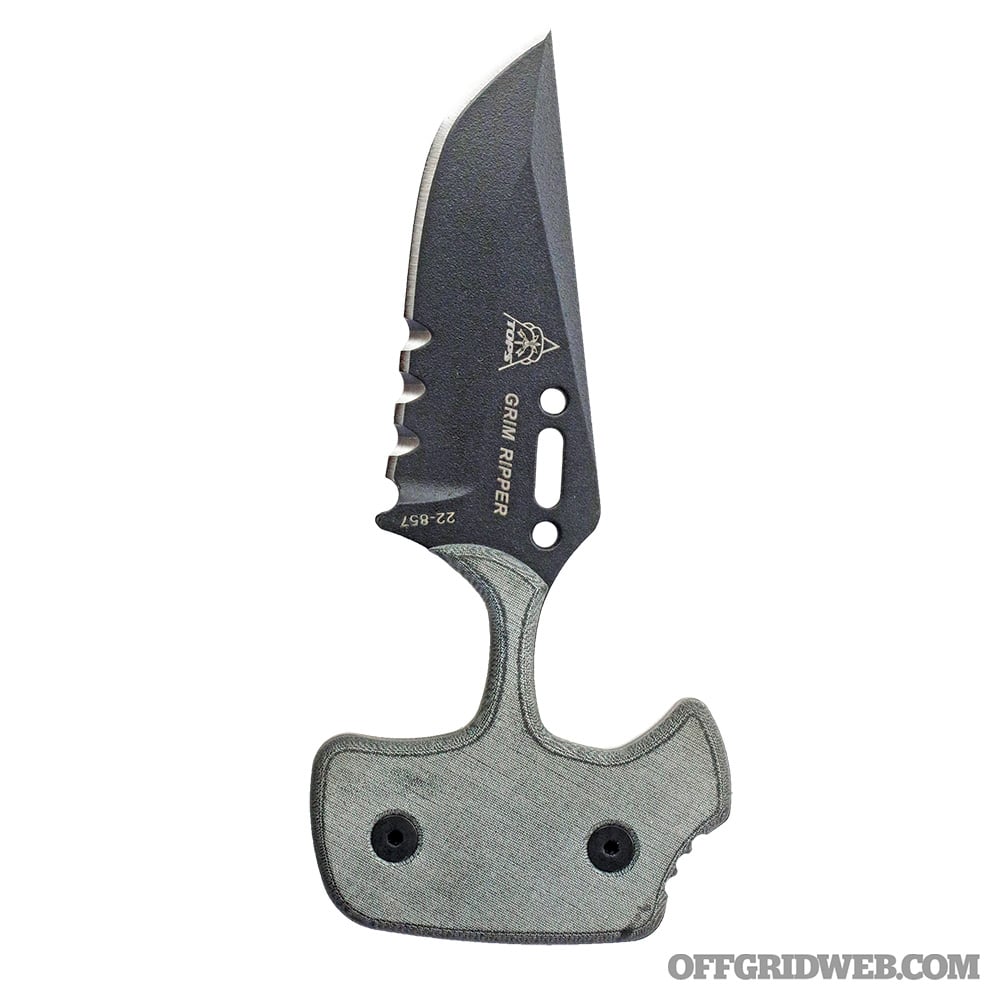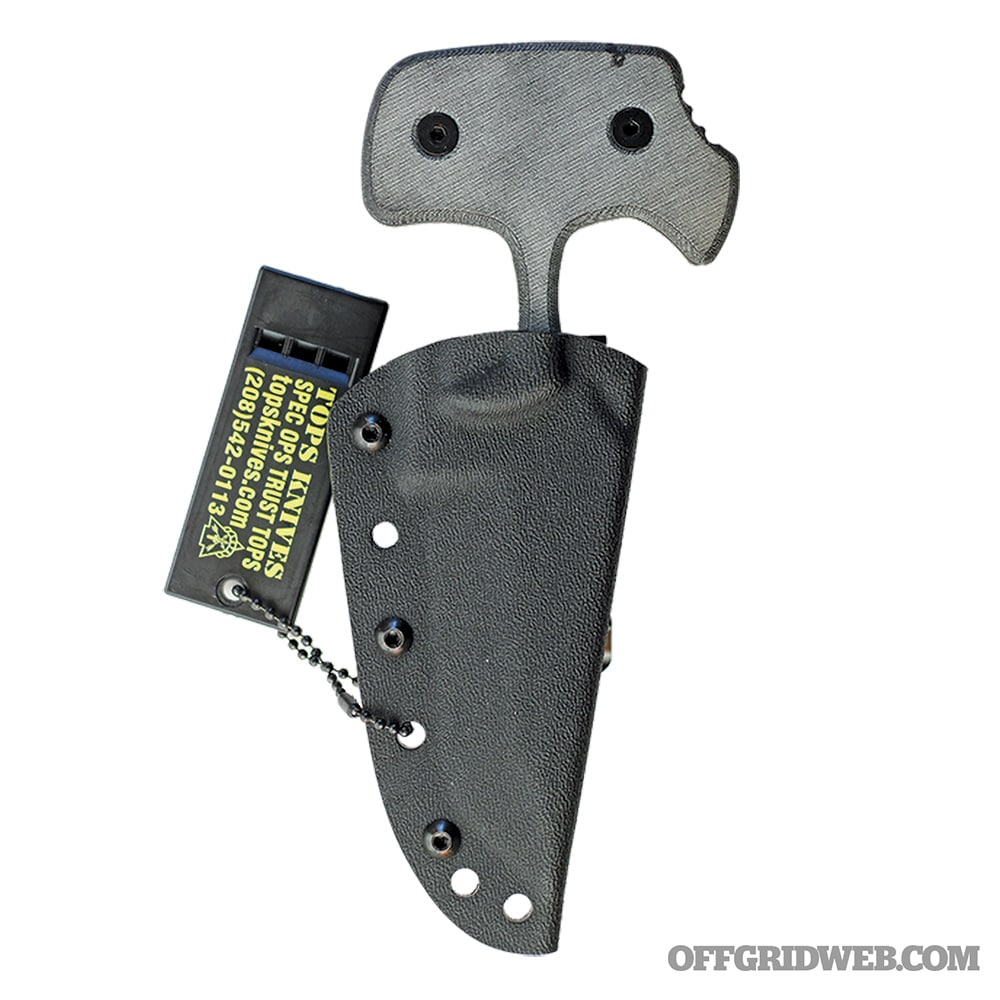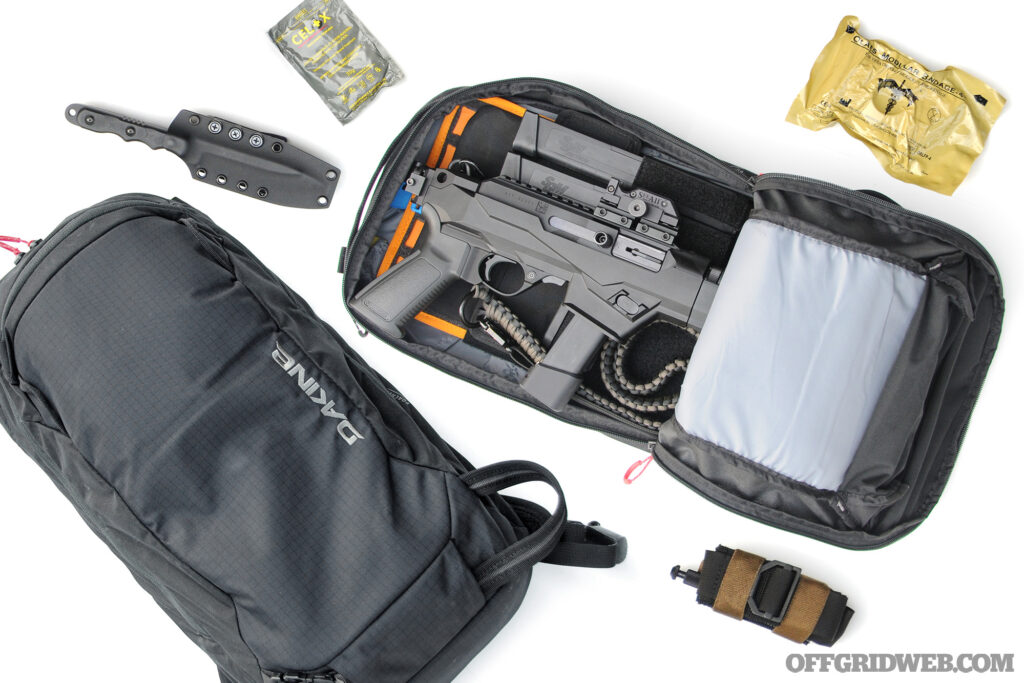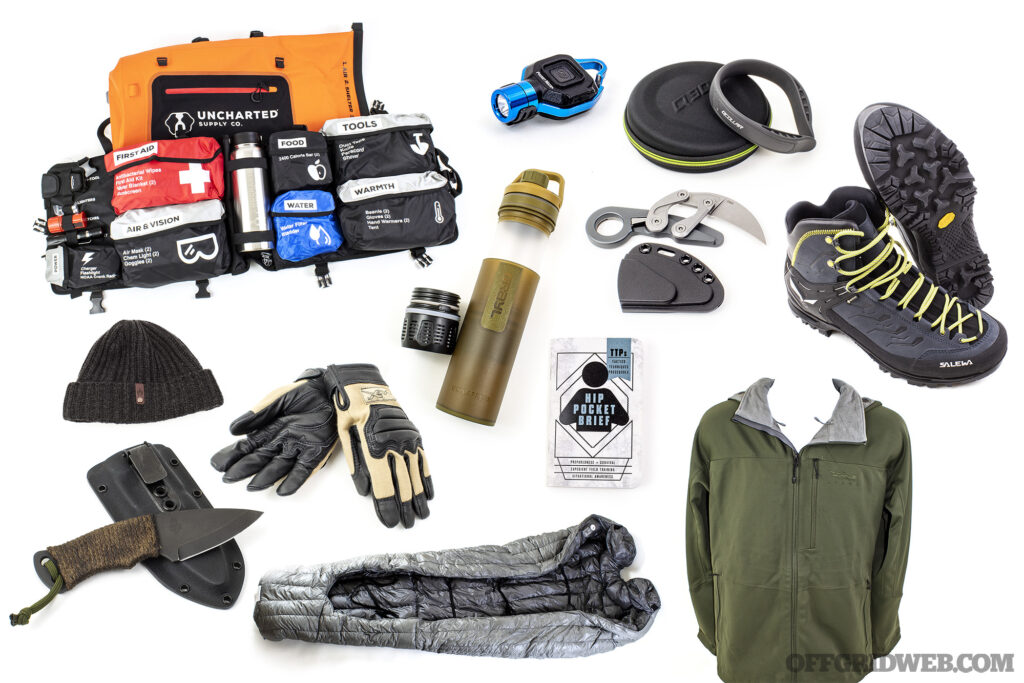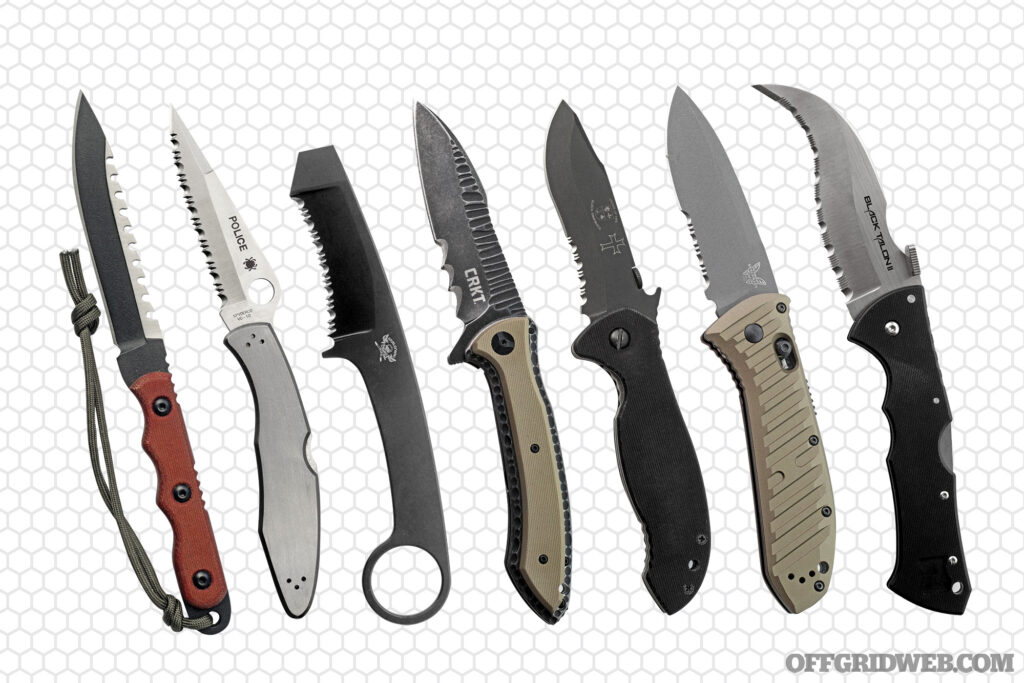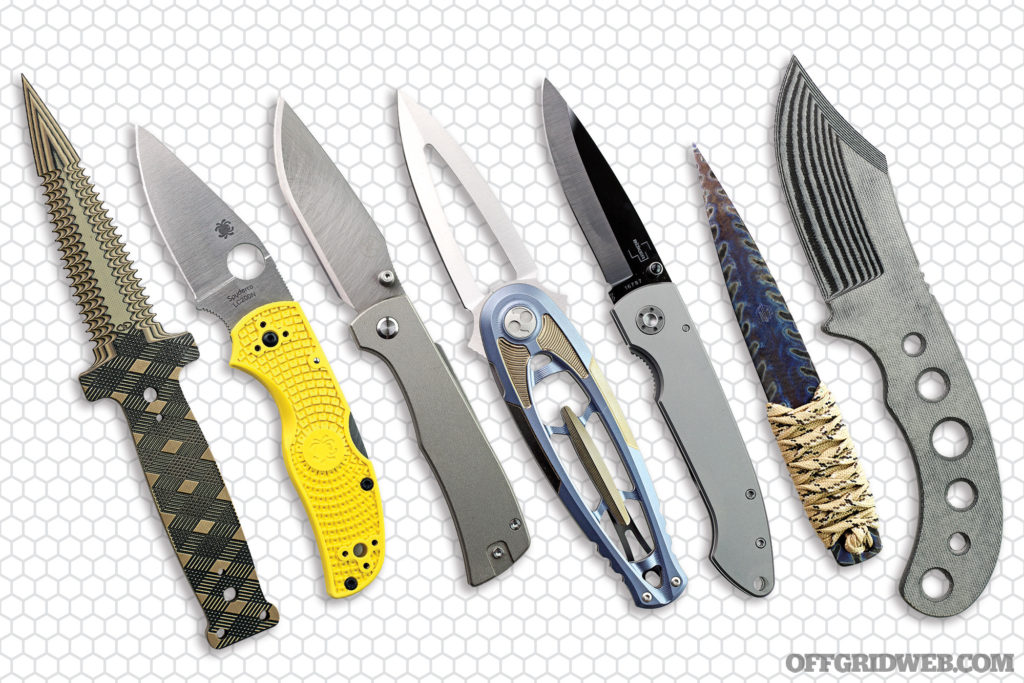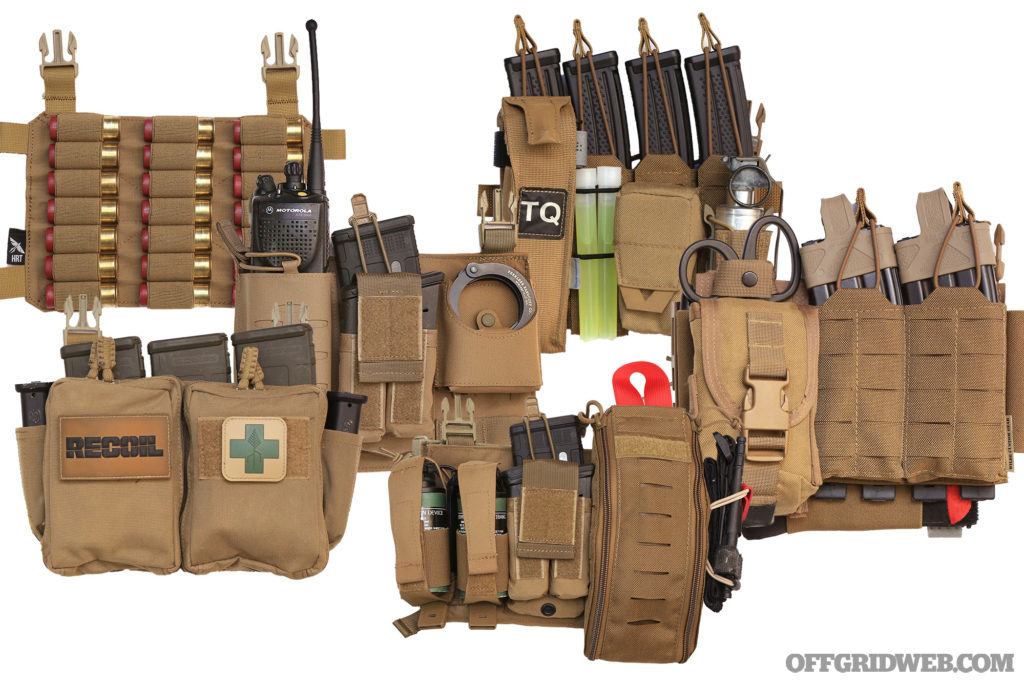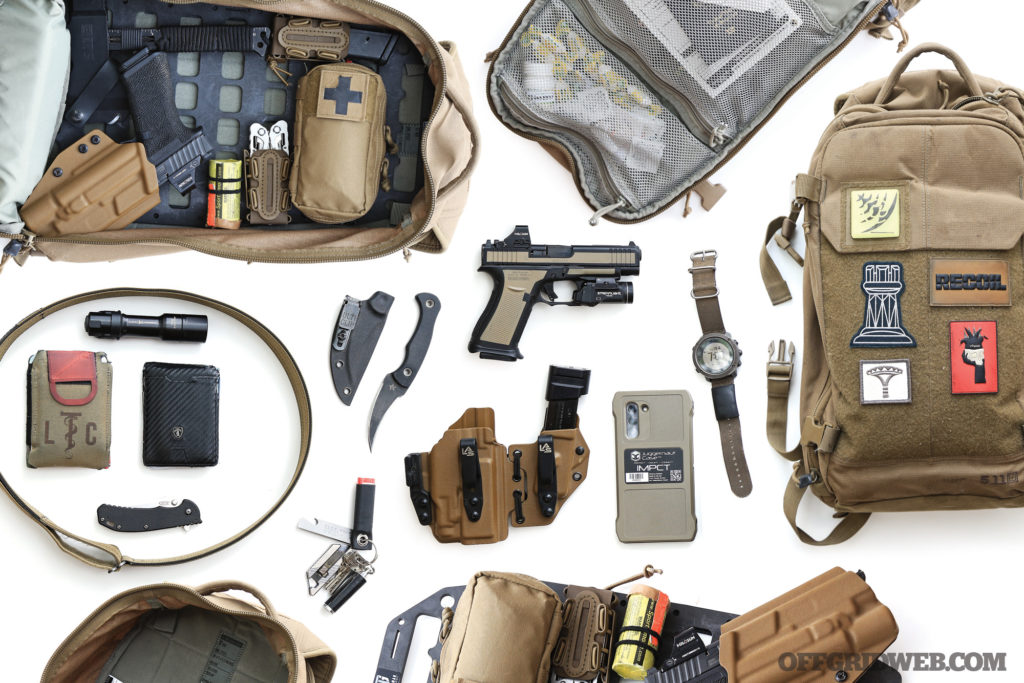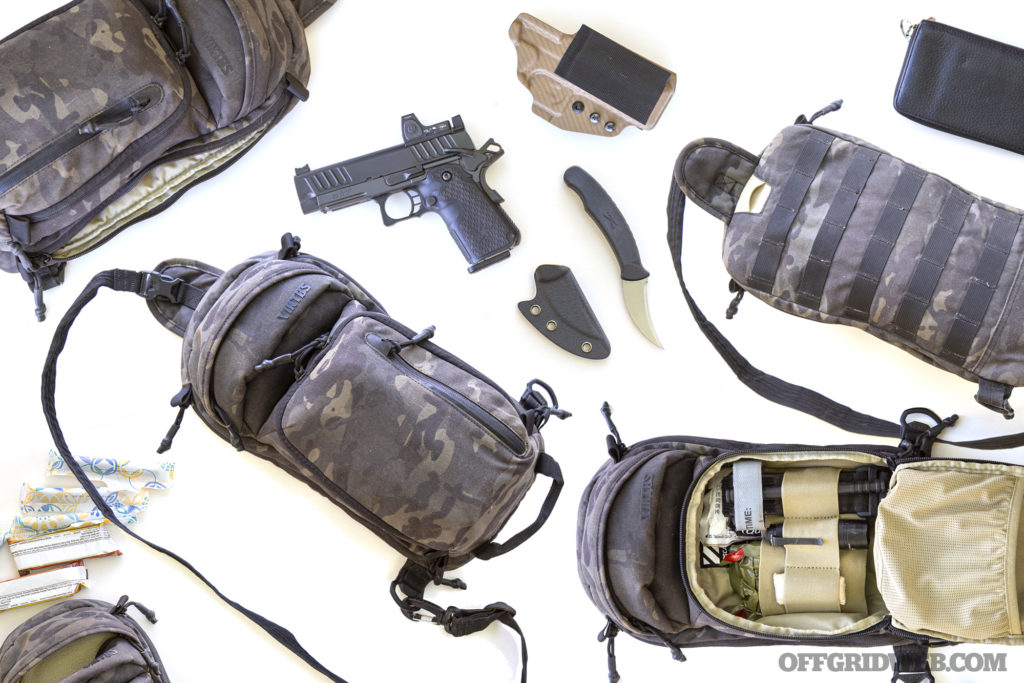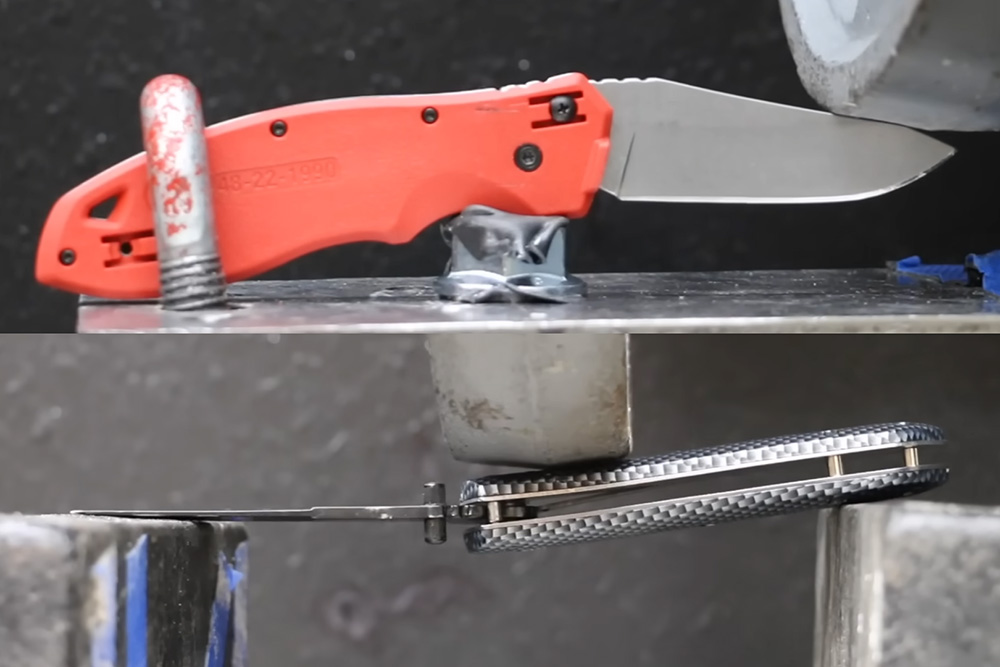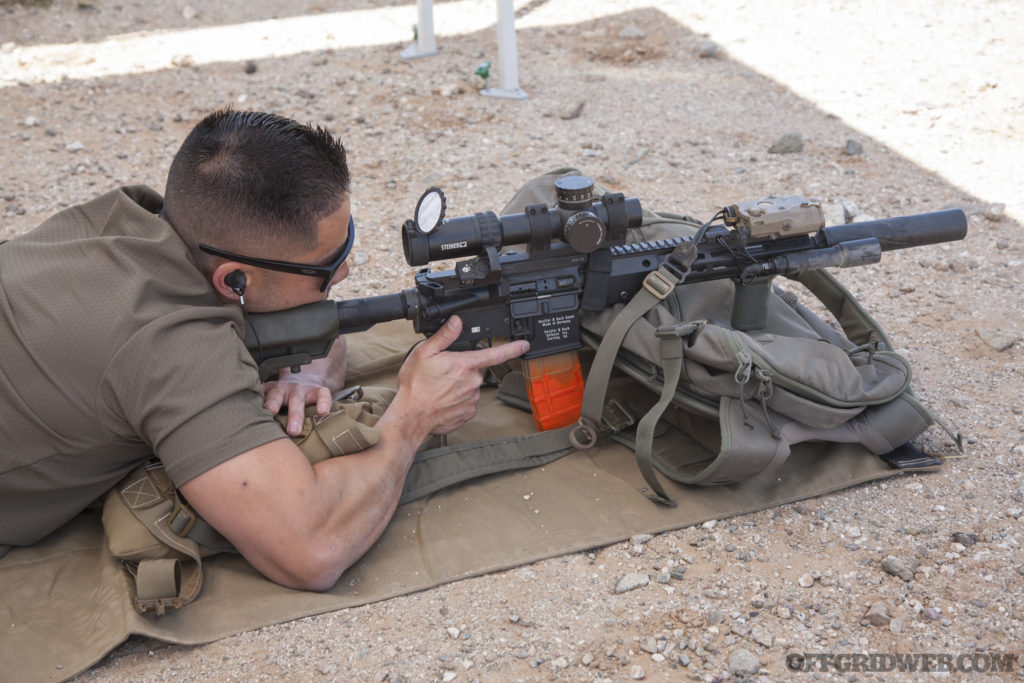You may know them under a variety of names: T-back knives, push daggers, punch knives, gimlet knives, or even palm knives. The bottom line is that they all do the same thing. You grasp the handle, and the blade protrudes through your fingers. You deliver a cut or a stab as you throw a punch. The idea has been around for centuries. Some Roman gladiators wore a weapon known as a cestus (or cesti when paired). These were leather gauntlets that covered the hand and had a blade, or several blades attached to the top. The gladiator armed in this manner would literally punch and stab for his life. Another variant was the katar of India. This was a long dagger grasped horizontally where the blade seemed to protrude from the fist, and it may have been where the term “palm dagger” originated. The modern version of the T-handle goes back a few hundred years to German immigrants to the United States. This easily concealable design was popular in the Southeastern U.S. particularly with riverboat gamblers, and it eventually made its way out West following the gold and silver rushes.
What is a Push Dagger?
Typically, the profile for this design resembles a T with the handle as the top bar and the blade as the stem. Historically, most of these blades were in a symmetrical dagger design or even a spike. The idea was that stabbing pokes holes in people and two edges were better than one. As we’ll see in this lineup, the symmetrical push dagger still rules the roost, but that’s not always the case. Some makers and manufacturers are utilizing more utilitarian blade shapes. This may be to work around jurisdictions that outlaw dirks or daggers.
Another noticeable trend is the handle design shifting from the traditional T to a hybrid between a T and a 7. There is virtue in this as it gives the user a better grip for fighting as well as if they may want to use the knife for a simple cutting task as opposed to being solely a combat knife. Even with that in mind, don’t look to one of these as your only knife, but think of it more like a backup weapon. They do work well as a fighting blade but can leave a lot to be desired as an EDC knife for many utilitarian tasks. Although, admittedly, a few in this batch are better at that than their forbears. As always, research the local and state laws before you start carrying a push dagger.
Jason Perry Blade Works Little Alien
Blade length:
2.25 inches
Overall length:
4 inches
Weight:
4 ounces
Handle material:
G10
Blade Steel:
1095
Price:
$130
Notes:
Jason Perry is a custom knifemaker based out of Concord, California, known for tactical fixed blades and stunning chef’s knives. The Little Alien is his take on the classic discreet push dagger. This is one of the smaller ones we looked at. It conceals well, but if you have XXL-sized fingers, it might be too small for you. It’s a well-made piece of 1095 steel with G10 handles and a wickedly done edge. This has a lot of potential as a last-ditch hideout knife. In this case, the short stall in the handle helps secure the blade close to your fingers so that it will not yaw on a punch.
Pros:
- Extremely small, but very effective
- The edges on this dagger are a testament to Perry’s skills.
- The artistry is subtle, but apparent.
Cons:
- As keen a cutter as 1095 is, the potential for rust exists on the exposed edge that’s uncoated. If you don’t live in an arid environment, make sure you maintain it.
- The sheath does a good job of securing the knife, but it does make for a slow draw as it partially encompasses the handle unless worn as a neck knife.
M3 Tactical Tech Boba Fett Push Dagger
Blade length:
2 inches
Overall length:
4.5 inches
Weight:
3.2 ounces
Handle material:
4140 carbon steel
Blade steel:
4140 carbon steel
Price:
$250
URL:
m3tacticaltech.com
Notes:
M3 Tactical Tech (Modern Mission Mobility) is run by Kevin Moore, a custom maker of knives, tools, and tactical gear. This time out, he took on the likeness of one of sci-fi’s greatest antiheroes and incorporated it into the design of this push dagger. This push dagger has a heft and feel that you just don’t want to put down. The handle fits the hand perfectly. The sheath has a metal clip and wears well on the belt comfortably and unobtrusively. While it looks amazing, this one is not an art knife or collectible you stash away in the safe. It’s meant to be used.
Pros:
- The appearance is tactical design meets fine art.
- Razor sharp with a single bevel edge, this knife makes for an awesome penetrator against steel drums.
- The sheath is simple, but highly effective for both securing the blade and keeping out of sight.
Cons:
- Carbon steel has the potential for rust unless you get a coated version.
- As M3 is a custom outfit, particular models may be scarce or only available during certain times of the year.
Mercworx Custos
Blade length:
3 inches
Overall length:
5 inches
Weight:
4.8 ounces
Handle material:
Canvas Micarta
Blade steel:
S30VN
Price:
$325
URL:
mercworxknives.com
Notes:
Mercworx Knives has been producing high-end custom tactical knives for a few decades, but seems to avoid the spotlight to do good work in the shadows. The Custos is an example of one of their push daggers that has a great deal of input from real-world operators. Constructed of S30V or 154CM steel, this blade is a one-piece construction, save for its canvas Micarta scales. The most interesting and most useful aspect is the unique shape of the handle and how it properly indexes when you throw a punch. A lot of thought went into this design, and it shows. The Kydex sheath is extremely well made and keeps it secure on your person.
Pros:
- This knife has one of the best push dagger handle treatments I’ve ever seen.
- The profile and grinds make this one excellent at penetration.
- The sheath keeps the blade secure yet doesn’t slow rapid deployment.
Cons:
- These custom knives usually involve a waitlist or a higher price on the secondary market.
- The edge could’ve been a little sharper, but it still penetrated different types of material.
Shivworks Black Push Dagger
Blade length:
2.75 inches
Overall length:
5 inches
Weight:
4.3 ounces
Handle material:
G10
Blade steel:
Sandvik 12c27
Price:
$130
URL:
shivworkspg.com
Notes:
Shivworks is a knife combatives training and edged weapons design team based in the Southeastern U.S. Their knives are intended to conceal well and be brought into action fast to help you fight your way through a violent encounter. The Push Dagger is a testament to the principals at Shivworks putting real-world input from their userbase into their products. This is one of those designs with the handle closer in profile to a 7 than a T shape. Only one edge is sharpened, which may help those who live in or travel to areas where a second edge may be a felony. It indexes well and has more utility use than the typical push dagger. A training version is available as well.
Pros:
- Indexes unlike any other due to its handle length and low profile
- The edge is sharp and can slash as well as it can stab.
- A training option for a fighting knife is a must.
Cons:
- The single edge is smart for a number of reasons, but I still prefer double edges for daggers.
- These knives are made overseas and can be subject to availability due to global supply chain issues.
Heretic Knives Sleight
Blade length:
3 inches
Overall length:
5.5 inches
Weight:
3.2 ounces
Handle material:
Aluminum
Blade steel:
CPM-20CV
Price:
$200
URL:
hereticknives.com
Notes:
Connoisseurs may find the Heretic Knives Sleight somewhat familiar. It has its roots in an iconic design by custom knifemaker Steve Ryan when he headed up the SureFire Edged Weapons Division and unveiled the forerunner to this knife as the SureFire Bravo. It was a modular push dagger. Rather than let the design die, Heretic Knives resurrected it with more than a few improvements. It’s still modular; you can swap blades and handles with other models for changes in color and texture. The handle treatment aids in retention and lends more leverage for cutting tasks.
Pros:
- CPM-20CV offers hardness, toughness, and excellent edge retention.
- The sheath is more like a holster, securing the blade and allowing you to carry on the belt, MOLLE, or secured to a pack.
- In testing, there was nothing that this blade wouldn’t cut.
Cons:
- Deployment from the sheath can take some getting used to if you’re relying on it for self-defense. Practice the draw often, and it’ll work well.
- The sheath is a masterpiece, but it can be a bit bulky to conceal.
T-Kell Knives Tarani Close Quarters (TCQ) Tri-Angle (Spearpoint)
Blade length:
3 inches
Overall length:
6.5 inches
Weight:
5.6 ounces
Handle material:
G10
Blade steel:
80CRV2
Price:
$230
URL:
tkellknives.com
Notes:
Tim Kell is a former active-duty Marine who turned to knifemaking as a civilian. He has built a large following for his realistic no-nonsense tactical knives, including building this design for Steve Tarani. The Tri-Angle fixed blade is offered in several blade profiles. Handle scales can be spec’d at time of purchase as well as the tightness of the Kydex sheath. This spearpoint model excels as not merely a push dagger, but as a close-quarters fighting blade. It can handle most typical EDC tasks comfortably as well.
Pros:
- 80CRV2 is corrosion resistant and easy to maintain.
- The handle shape is brilliant and shows what you can achieve when you team up a combatives instructor with a knifemaker.
- The sheath is one of the more versatile ones I’ve seen.
Cons:
- The spearpoint design is close in profile to a dagger but lacks that second edge. While great for legal reasons in many areas, it lacks the true aesthetics of a symmetrical dagger.
TOPS Knives Grim Ripper
Blade length:
3.5 inches
Overall length:
6.5 inches
Weight:
7.3 ounces
Handle material:
G10
Blade steel:
1095
Price:
$195
URL:
topsknives.com
Notes:
TOPS Knives builds serious hard-use knives for professionals, and this model has been very popular among troops as a boot knife. It comes with a survival whistle should you get lost and need an auditory method of signaling. With its clip-point profile and serrations, it has the characteristics of a great EDC blade turned into a push dagger. The single edge means that it won’t be considered a dagger in some jurisdictions. The Grim Ripper’s strength as a push dagger goes to the handle. Although it’s definitely a T-back style, there’s a ledge for your thumb to prevent the knife from yawing in-CQB, but also lends support and control when using it in an EDC role.
Pros:
- The serrations are well done.
- The G10 handles with the incorporated thumb ramp are so comfortable that this can work for most mundane cutting tasks.
- The included survival whistle is a nice bonus.
Cons:
- In spite of the coated blade, 1095 will rust in a maritime or even very humid environment.
- Its size makes it less concealable than most push daggers.
Related Posts
The post Pocket Preps: Push Dagger Buyer’s Guide appeared first on RECOIL OFFGRID.


